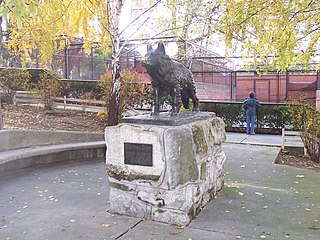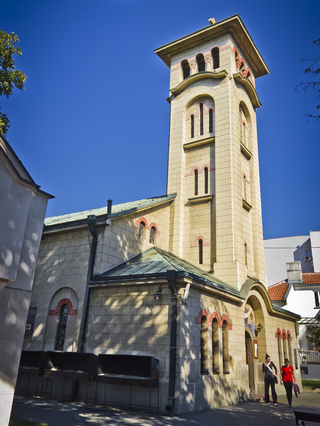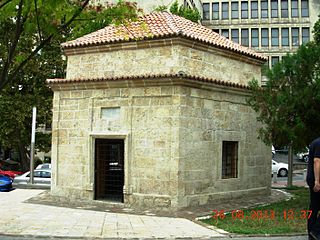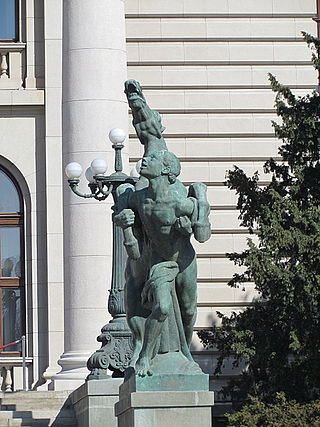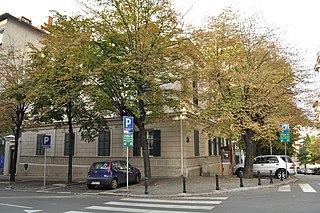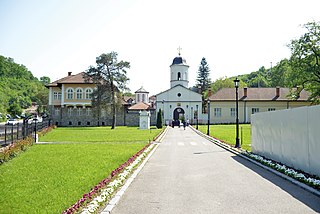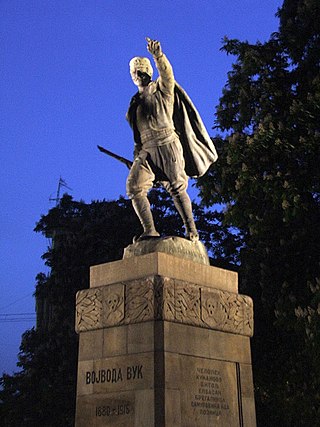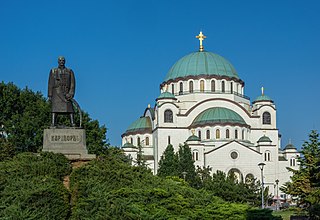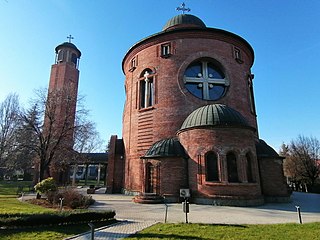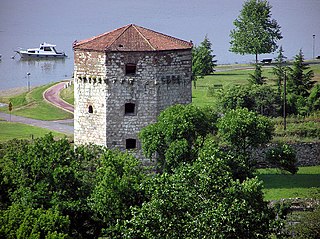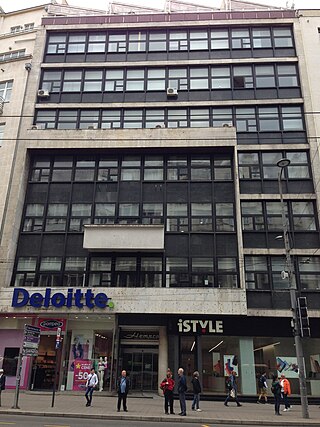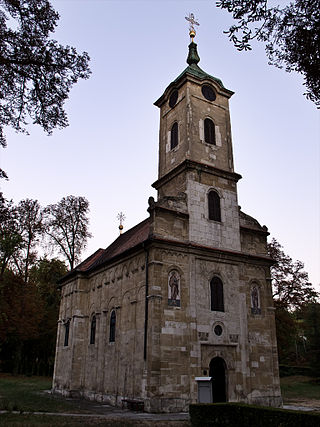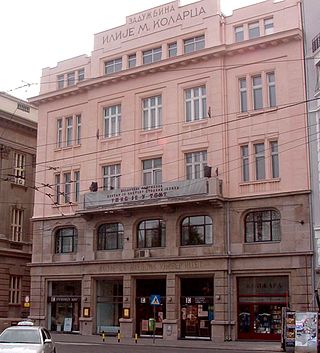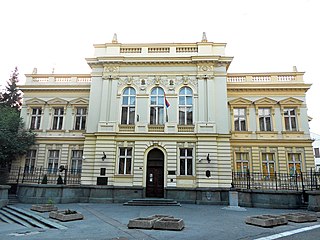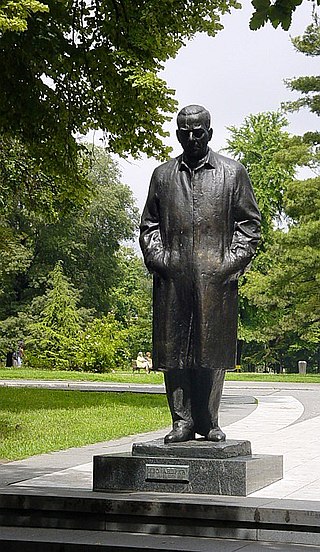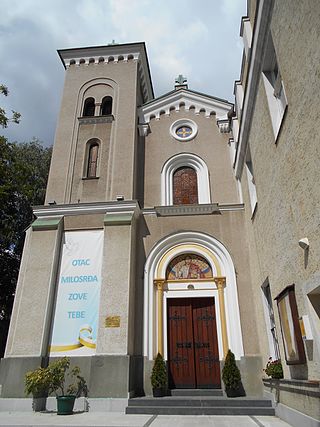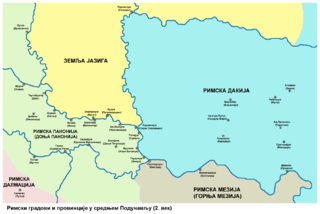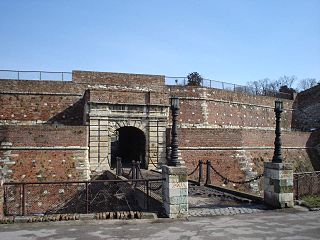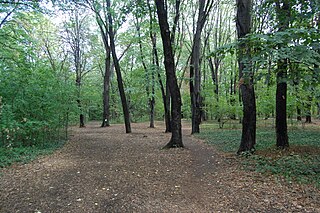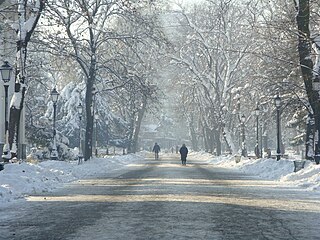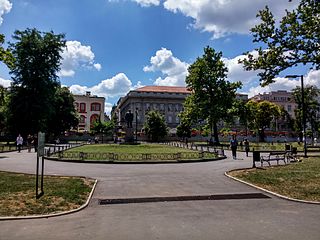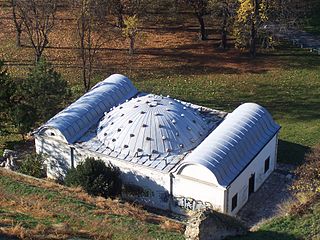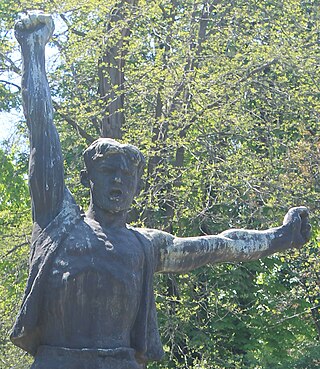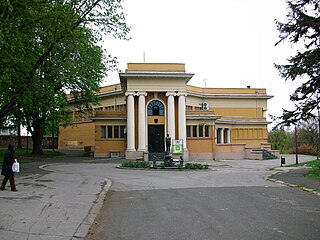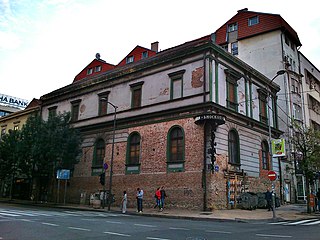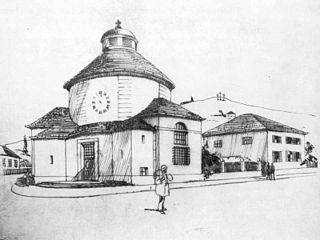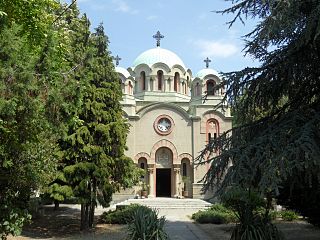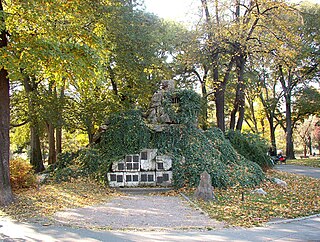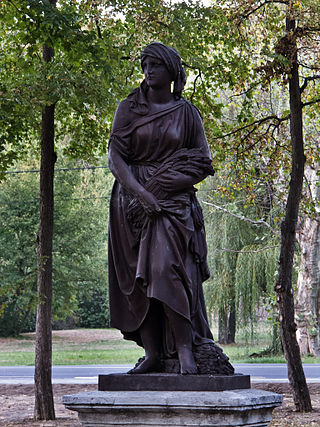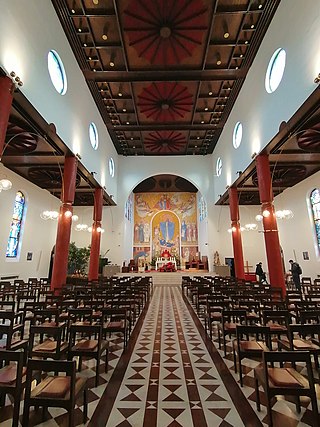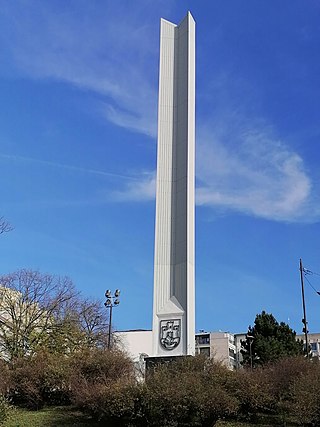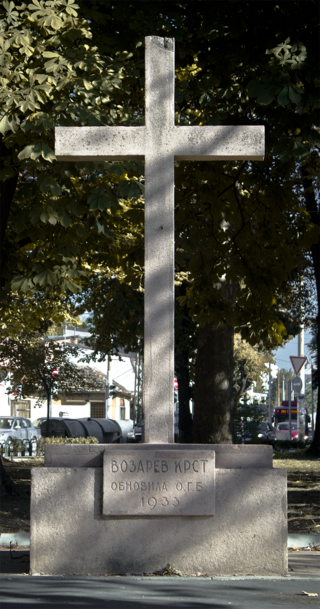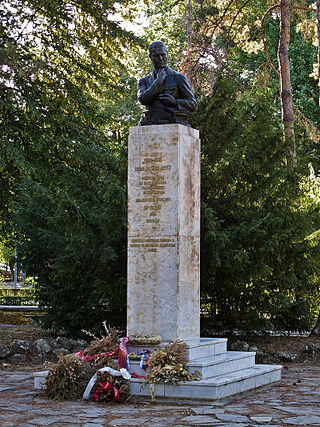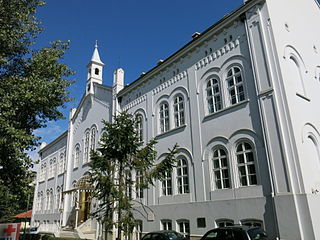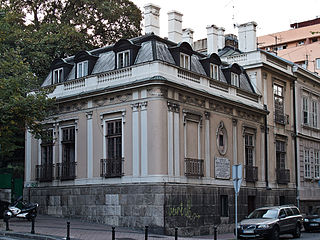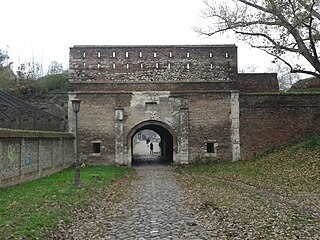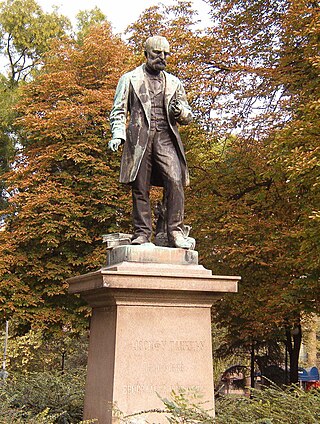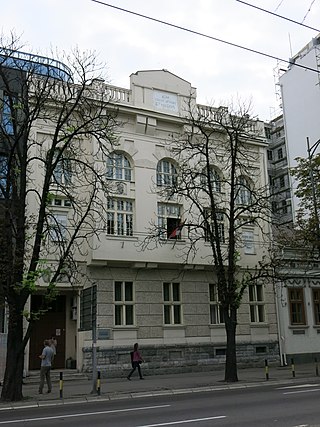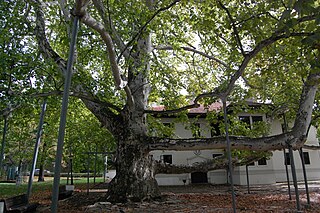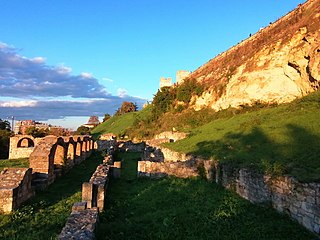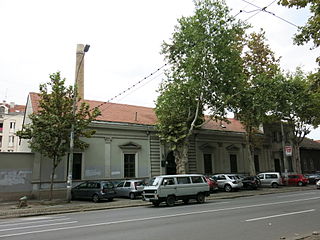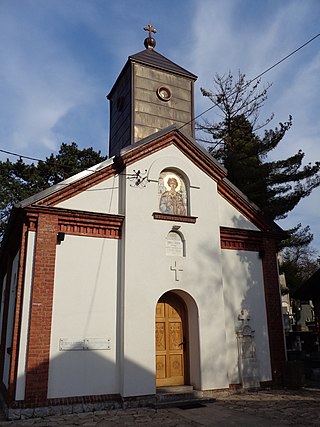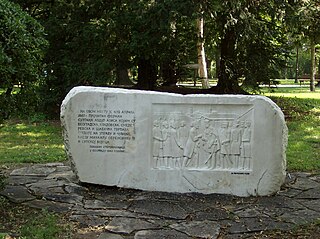100 Sights in Belgrade, Serbia (with Map and Images)
Legend
Premium Sights
Book tickets, guided tours and activities in Belgrade.
Guided Free Walking Tours
Book free guided walking tours in Belgrade.
Welcome to your journey through the most beautiful sights in Belgrade, Serbia! Whether you want to discover the city's historical treasures or experience its modern highlights, you'll find everything your heart desires here. Be inspired by our selection and plan your unforgettable adventure in Belgrade. Dive into the diversity of this fascinating city and discover everything it has to offer.
Sightseeing Tours in BelgradeActivities in BelgradeThe Roman well at Kalemegdan is a fortress installation or fortress garrison (public) well of narrow profile and great depth, dug into the rocky ground below the plateau of the Upper Town, the ancient Belgrade Fortress, with a masonry staircase on two passing helicoid strips.
The House of Flowers is the resting place of Josip Broz Tito (1892–1980) and Jovanka Broz (1924–2013), the President and the First Lady of the Socialist Federal Republic of Yugoslavia. It is located on the grounds of the Museum of Yugoslavia in Dedinje, Belgrade, Serbia.
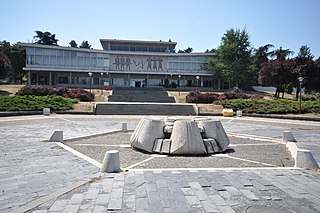
The Museum of Yugoslavia is a public history museum in Belgrade, the capital of Serbia. It chronicles the period of Kingdom of Yugoslavia and Socialist Yugoslavia as well as the life of Josip Broz Tito. Tito's grave is located in one of the museum buildings.
Pioneers Park is a park in Belgrade, the capital of Serbia. Developed from the royal garden, which itself was a successor of a much older garden, it is today one of the central city parks. It has been open for public since 1944. The park has been declared a botanical natural monument.
The Belgrade Fortress, consists of the old citadel and Kalemegdan Park on the confluence of the Sava and Danube rivers, in an urban area of modern Belgrade, Serbia. Located in Belgrade's municipality of Stari Grad, the fortress constitutes the specific historical core of the city. As one of the most important representatives of Belgrade's cultural heritage, it was originally protected right after World War II, among the first officially declared cultural monuments in Serbia. The fortress was declared a Monument of Culture of Exceptional Importance in 1979, and is protected by the Republic of Serbia. It is the most visited tourist attraction in Belgrade, with Skadarlija being the second. Since the admission is free, it is estimated that the total number of visitors is over 2 million yearly.
The Bajrakli Mosque is a mosque in Belgrade, the capital of Serbia. It is located in Gospodar Jevremova Street in the neighbourhood of Dorćol. It was built around 1575, and is the only mosque in the city out of the 273 that had existed during the time of the Ottoman Empire's rule of Serbia.
The Kalemegdan Park, or simply Kalemegdan is the largest park and the most important historical monument in Belgrade. It is located on a 125-metre-high (410 ft) cliff, at the junction of the River Sava and the Danube.
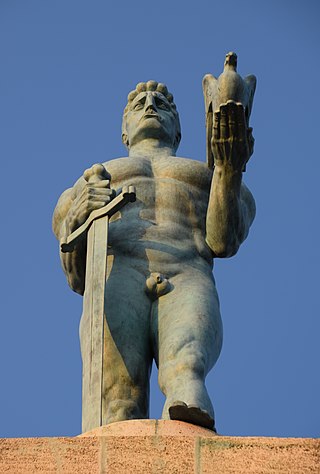
Pobednik is a monument in the Upper Town of the Belgrade Fortress, built to commemorate Serbia's victory over the Ottoman and Austro-Hungarian empires during the Balkan Wars and the First World War. Cast in 1913, erected in 1928, and standing at 14 metres (46 ft) high, it is one of the most famous works of Ivan Meštrović. It is also one of the most visited tourist attractions in Belgrade and one of its most recognizable landmarks.
9. National Museum of Serbia
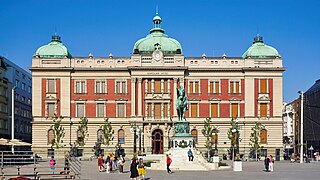
The National Museum of Serbia is the largest and oldest museum in Belgrade, Serbia. It is located in the central zone of Belgrade on a square plot between the Republic Square, formerly Theatre Square, and three streets: Čika Ljubina, Vasina and Laze Pačua. Its main facade is on the Republic Square and the official address ia 1a Republic Square.
10. Saint Sava Cathedral
The Church of Saint Sava is a 79 m high Serbian Orthodox church, which sits on the Vračar plateau in Belgrade, Serbia. It was planned as the bishopric seat and main cathedral of the Serbian Orthodox Church. The church is dedicated to Saint Sava, the founder of the Serbian Orthodox Church and an important figure in medieval Serbia. It is built on the presumed location of St. Sava's grave. His coffin had been moved from Mileševa Monastery to Belgrade. The coffin was placed on a pyre and burnt in 1595 by Ottoman Grand Vizier Sinan Pasha. Bogdan Nestorović and Aleksandar Deroko were finally chosen to be the architects in 1932 after a second revised competition in 1926–27. This sudden decision instigated an important debate in interwar Yugoslavia which centered around the temple's size, design and symbolic national function. This was accompanied by a sizeable increase in the base area of the ambitiously conceived project. The new design departed from the competition guidelines issued in 1926, and was to replicate the dimensions and architecture of Hagia Sophia.
11. Belgrade Zoo

Beo zoo vrt, also known as Vrt dobre nade, is a publicly owned zoo located in Kalemegdan Park, downtown of Belgrade, Serbia. Established on July 12, 1936, it is considered to be one of the oldest public zoos in southeastern Europe. The zoo covers 7 hectares and houses a collection of 210 animal species, with approximately 800 individuals, making it the largest zoological garden in Serbia. With around 400,000 annual visitors it is also recognized as one of the most popular tourist attractions in Belgrade.
12. Old Fair Concentration Camp
The Sajmište concentration camp was a Nazi German concentration and extermination camp during World War II. It was located at the former Belgrade fairground site near the town of Zemun, in the Independent State of Croatia (NDH). The camp was organized and operated by SS Einsatzgruppen units stationed in occupied Serbia. It became operational in September 1941 and was officially opened on 28 October of that year. The Germans dubbed it the Jewish camp in Zemun. At the end of 1941 and the beginning of 1942, thousands of Jewish women, children and old men were brought to the camp, along with 500 Jewish men and 292 Romani women and children, most of whom were from Niš, Smederevo and Šabac. Women and children were placed in makeshift barracks and suffered during numerous influenza epidemics. Kept in squalid conditions, they were provided with inadequate amounts of food and many froze to death during the winter of 1941–42. Between March and May 1942, the Germans used a gas van sent from Berlin to kill thousands of Jewish inmates.
13. Nikola Tesla Museum
The Nikola Tesla Museum is a science museum located in Belgrade, Serbia. It is dedicated to honoring and displaying the life and work of Nikola Tesla as well as the final resting place for Tesla. It holds more than 160,000 original documents, over 2,000 books and journals, over 1,200 historical technical exhibits, over 1,500 photographs and photo plates of original, technical objects, instruments and apparatus, and over 1,000 plans and drawings. Very little is on display in the small ground floor exhibition space.
14. Антички Сингидунум
Singidunum was an ancient city which later evolved into modern Belgrade, the capital of Serbia. The name is of Celtic origin, going back to the time when the Celtic tribe Scordisci settled the area in the 3rd century BC, following the Gallic invasion of the Balkans. Later on, the Roman Republic conquered the area in 75 BC and incorporated it into the province of Moesia. It was an important fort of the Danubian Limes and Roman Legio IV Flavia Felix was garrisoned there since 86 AD. Singidunum was the birthplace of the Roman Emperor Jovian. It was sacked by Huns in 441, and by Avars and Slavs in 584. At the beginning of the 7th century, the Singidunum fort was finally destroyed.
15. Tasmajdan Park
Tašmajdan Park, colloquially Tašmajdan or simply just Taš, is a public park and the surrounding urban neighborhood of Belgrade, the capital of Serbia. It is located in Belgrade's municipality of Palilula.
16. New Cemetery
The New Cemetery is a cemetery complex in Belgrade, Serbia, with a distinct history. It is located in Ruzveltova street in Zvezdara municipality. The cemetery was built in 1886 as the third Christian cemetery in Belgrade and as the first architecturally and urbanistically planned cemetery in Serbia.
17. Ruins of National Library from 1941 Nazi bombing
The National Library of Serbia is the national library of Serbia, located in the capital city of Belgrade. It is the biggest library, and oldest institution in Serbia, one that was completely destroyed many times over in the last two centuries.
18. Belgrade Synagogue Sukkat Shalom
The Belgrade Synagogue, officially the Sukkat Shalom Synagogue, is an Orthodox Jewish congregation and synagogue, located in central Belgrade, near Obilićev Venac Square and central high street Knez Mihailova, in Serbia.
19. Saint Mark's Church
The St. Mark's Church or the Church of St. Mark is a Serbian Orthodox church located in the Tašmajdan park in Belgrade, Serbia, near the Parliament of Serbia. It was built in the Serbo-Byzantine style by the Krstić brothers, completed in 1940, on the site of a previous church dating to 1835. It is one of the largest churches in the country. There is a small Russian church next to St. Mark's.
Wikipedia: St. Mark's Church, Belgrade (EN), Website, Heritage Website
20. Prince Mihailo Monument
Prince Mihailo Monument is a monument of Prince Mihailo. It is located in the main Republic Square in Belgrade, Serbia, and was erected in 1882. It was the first public monument with representation of an equestrian figure of a ruler in Serbia. The monument is by Italian sculptor Enrico Pazzi. Reliefs on the monument were performed according to the drawings of architect Konstantin Jovanović. The monument was declared a Monument of Culture of Great Importance in 1979 and it is protected by Republic of Serbia, as the oldest and the most representative figural Serbian memorial.
21. Topčider park
Topčider is a forest park and an urban neighborhood of Belgrade, the capital of Serbia. It is divided between the municipalities of Čukarica, Rakovica and Savski Venac. Being close to downtown, it is one of the major locations for relaxation, picnics and fresh air for the citizens of Belgrade.
22. Ruins of Yugoslav General Staff from 1999 NATO bombing
The Yugoslav Ministry of Defence Building, also known as the General Staff Building, is a complex of government buildings, that formerly housed the Ministry of Defence of Yugoslavia and the General Staff of the Yugoslav People's Army, now housing the Ministry of Defence of Serbia. It is located in Savski Venac, Belgrade.
Wikipedia: Yugoslav Ministry of Defence Building (EN), Heritage Website
23. Cathedral Church of St. Michael the Archangel
The Cathedral Church of St. Michael the Archangel is a Serbian Orthodox cathedral church in the centre of Belgrade, Serbia, situated in the old part of the city, at the intersection of Kralja Petra and Kneza Sime Markovića streets. It was built between 1837 and 1840, on the location of an older church also dedicated to Archangel Michael. It is one of the most important places of worship in the country. It is commonly known as just Saborna crkva among the city residents. It was proclaimed as a Cultural Monument of Exceptional Importance in 1979.
24. Svetozar Marković University Library
The University Library Svetozar Marković (Serbian: Универзитетска библиотека Светозар Марковић) is the main library in the University of Belgrade system, named after Svetozar Marković, a Serbian political activist in the 19th century. It is located on King Alexander Boulevard, close to the Faculty of Law and adjacent to the Faculties of Civil Engineering, Electrical Engineering, and Architecture. Serves the educational and scientific needs of students, academics, and scientists. Library Day is 24 May, a day commemorating Slavic educators St. Cyril and Methodius. At the founding of the library, the collection contained 57,254 publications consisting of monographs and serials. Today, the library contains roughly 1,700,000 publications.
Wikipedia: Belgrade University Library (EN), Heritage Website
25. Косанчићев венац
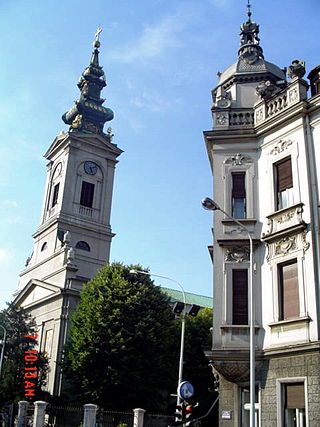
Kosančićev Venac is an urban neighborhood of Belgrade, the capital of Serbia. It is located in Belgrade's municipality of Stari Grad. It has been described as the most valuable and most representative veduta of Belgrade. In 1971, it was declared a spatial cultural-historical unit and placed under legal protection.
26. Opera & Theatre Madlenianum
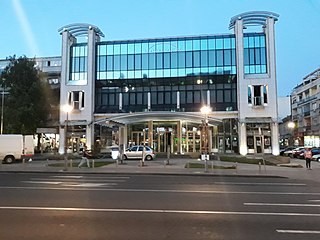
Madlenianum Opera and Theatre is an opera house and theatre located in Zemun, Belgrade, Serbia. It is the first privately owned opera and theater company both in Serbia and in Southeast Europe. It is located in Belgrade, Serbia, and was founded on 26 January 1999, by Madlena Zepter, wife of Philip Zepter, Serbian businessman. The name Madlenianum derives from Madlena Zepter's name.
27. Црква Свете Тројице
The Church of the Holy Trinity, better known as the Holy Trinity Church, is a temple of the Serbian Orthodox Church located in Zemun. It is dedicated to the Holy Trinity. Its construction began in 1842, on the foundations of the former Serbian place of worship.
28. Дом Вукове задужбине
The Vuk Foundation House is the name of a historical building in Belgrade, built in 1879, that serves as the headquarters of the Vuk Foundation. Located on the Теrazije at 2 Kralja Milana Street, it is one of the oldest structures in that part of Belgrade. Aleksandar Bugarski, a prominent 19th-century Serbian architect, designed the original building as a two-story house in the Academic art style of the day.
29. Ethnographic Museum
The Ethnographic Museum is a museum located in Belgrade, the capital of Serbia. It is one of the oldest museums in the Balkans. The Ethnographic Museum in Belgrade fulfills its mission together with the efforts of various stakeholders in the domain of presentation, revitalization and development of crafts in Serbia.
Wikipedia: Ethnographic Museum, Belgrade (EN), Website, Heritage Website
30. Presidency of the Republic of Serbia
The Novi Dvor is the seat of the President of Serbia. It was a royal residence of the Karađorđević dynasty of Kingdom of Yugoslavia from 1922 to 1934. The palace is located on Andrićev Venac in Belgrade, opposite Stari Dvor.
31. Monument to Grand Zupan Stefan Nemanja
The monument to Stefan Nemanja is located on Sava Square in Belgrade, at the beginning of Nemanjina Street, in front of the former building of the Main Railway Station, and is the work of Russian sculptor Alexander Yulianovich Rukavishnikov, a member of the Russian Academy of Arts.
32. Jewish Historical Museum
The Jewish Historical Museum is a museum located to the southeast of Kalemegdan, Stari Grad, Belgrade. Founded in 1948, it is the only Jewish museum in Serbia. The museum is situated in a building constructed in 1928 for the Sefardic community. The museum's collection is comprehensive and also complex in its content, with exhibits arranged thematically.
33. PTT Museum
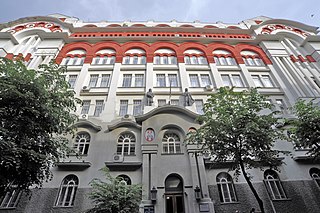
PTT Museum (Postal-Telegraph-Telephone Museum) in Belgrade, functions as a museum within the Public Enterprise "Post of Serbia". It is located at 13 Majke Jevrosime Street. PTT Museum was founded for the purpose of protecting, collecting, studying and exhibiting objects and documents related to the work and development of postal, telegraph and telephone traffic on the territory of Serbia. The representative building is the work of the famous architect Momir Korunović and is designed in a modern Serbian-Byzantine style.
34. Црква Узнесења Блажене Дјевице Марије
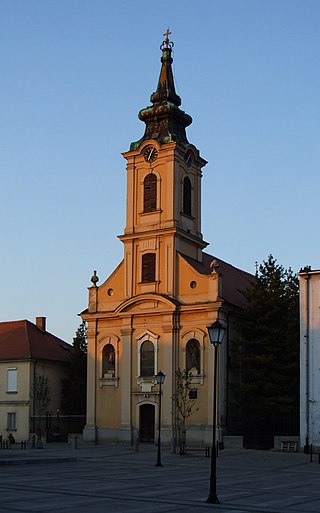
The Church of the Assumption of the Blessed Virgin Mary is a Roman Catholic parish church located on the Great Square in Zemun. It was declared a cultural monument of the Republic of Serbia in December 2022.
Wikipedia: Црква Узнесења Блажене дјевице Марије (Земун) (SR)
35. Црква Ружица
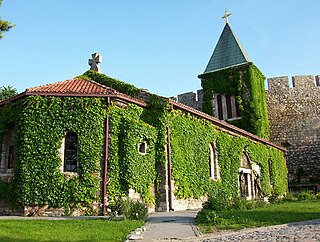
Please credit this with : "White Writer, Wikipedia" in the immediate vicinity of the image. An email to WhiteWriter would be appreciated too. If you would like special permission to use, license, or purchase the image please contact me WhiteWriter to negotiate terms. / CC BY-SA 3.0
Ružica Church is a Serbian Orthodox church located in the Belgrade Fortress, in Belgrade, the capital of Serbia. The original church was built in the early 15th century. It was remodelled in 1869 and fully reconstructed in 1925. It is dedicated to the Nativity of Mary. With its location within the fortress near the water spring of Saint Petka, constant crowds of visitors come - especially on Saint Petka's feast day. It is considered one of the "best loved churches among the faithful".
36. Црква Свете тројице
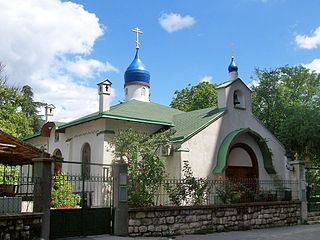
The Church of the Holy Trinity, also called the Russian Church, in Belgrade is a metochion of the Russian Orthodox church in Belgrade, Serbia. It was erected in 1924 according to the plans of Russian émigré architect Valery Stashevsky and was meant mainly for refugees from Soviet Russia who arrived in Serbia in thousands from 1920, after the defeat of the White Army in European part of Russia in the Russian Civil War. The church is located on the northern edge of the Tašmajdan Park, next to a much bigger St. Mark's of the Serbian Orthodox Church.
37. Manak's House
Manak's House is a building on the outskirts of the former Savamala, Belgrade. It is located on the corner of Kraljevića Marka and Gavrila Principa Streets in Belgrade, Serbia. It was declared a cultural monument by the Cultural Heritage Preservation Institute of Belgrade on 9 May 1963.
38. Museum of Vuk and Dositej
The Museum of Vuk and Dositej is one of the most important memorial museums in Belgrade, the capital of Serbia. Founded in 1949, it depicts the life, work and legacy of Vuk Stefanović Karadžić (1787–1864), the reformer of the Serbian language, and Dositej Obradović (1742–1811), a writer who was the country's first Minister of Education. The museum is a crucial site for understanding the revival of Serbian culture at the time of the First Serbian Uprising against the Ottoman Empire. Since 1979, this institution has been governed by the National Museum of Serbia.
39. Pedagogical Museum
The Pedagogical Museum in Belgrade was founded on November 24, 1896 and is one of the oldest museum institutions in Serbia. It was founded by the Teachers' Association of Serbia with the task of collecting and preserving teaching aids and everything else that has pedagogical and historical value for primary schools and teachers. Since 1969, it has been located in the building of Belgrade's Realka in the immediate vicinity of Kalemegdan, at 14 Uzun Mirkova Street.
40. Damat Ali Pasha Turbe
Damat Ali-Paša's Turbeh is an Ottoman mausoleum erected in 1784 in Belgrade, Serbia. It held the body of the vizier Silahdar Damat Ali Pasha. The building is situated in the Upper Town of the Belgrade Fortress. Along with Sheik Mustafa's Tomb, this monument represents one of the only remaining examples of Islamic funerary architecture in Belgrade.
41. Kraljevski dvor
The Kraljevski Dvor is the main building in the Dedinje Royal Compound and was the official residence of the Karađorđević royal family from 1934 to 1941. The palace was built between 1924 and 1929 with the private funds of King Alexander I and since 2001 is home of Crown Prince Alexander.
42. Terazijska česma
The Terasia fountain is located in Terazije, in front of the hotel "Moskva". It was built in the form of a stone pillar, with a metal vase on top, with a total height of about 800 cm. It was erected in 1860 by order of Prince Miloš, which marked his return to the throne. It is a work of sculptor Franz Laurent.
43. Belgrade City Museum
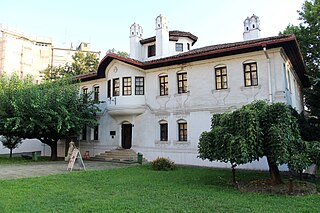
The Belgrade City Museum is a museum located in Belgrade, Serbia. Founded in 1903, the museum operates with several cultural institutions: Ivo Andrić Museum, Princess Ljubica's Residence, Paja Jovanović Museum, Jovan Cvijić Museum, Banjica Concentration Camp Museum, Collection of Icons Sekulić, Archaeological Site Vinča and Zemun Museum.
44. Дом браће Крстић
The Krstić Brothers House is located in Belgrade, at the King Milutin street no.5, since 1973, with the status of cultural heritage. The house was built in the late 19th century as a representative of a residential buildings. As there was no saved data of the architect, it was assumed, based on some elements of decoration, that the author of the project could be the architect Јован Илкић. Soon after the raising of the house, Krstic family moved in. The family were known for their two children, a renowned architects Peter and Branko.
45. Музеј „4. јули“ (Кућа Владислава Рибникара)
The Museum of 4 July was a museum located in Belgrade, the capital of Serbia. It was established in 1950 in the house where members of the Central Committee of the Communist Party of Yugoslavia decided to encourage the people's uprising against Yugoslavia's German occupiers on 4 July 1941. That date was later dubbed Fighter's Day, a public holiday during the existence of Socialist Federal Republic of Yugoslavia.
46. Споменик керуши Габи
Gabi was a female German Shepherd who worked as a guard dog in the Belgrade Zoo, SR Serbia, SFR Yugoslavia. She became famous when she was attacked by a jaguar that escaped from its cage on 22 June 1987.
47. Црква Покрова Пресвете Богородице
The Church of the Protection of the Most Holy Mother of God in Belgrade is a Serbian Orthodox church, built in Zvezdara, in the area between the Red Cross, Đerm and Cvetko. It belongs to the Archdiocese of Belgrade-Karlovac. It represents an immovable cultural property as a cultural monument.
Wikipedia: Црква Покрова Пресвете Богородице у Београду (SR), Heritage Website
48. Sheikh Mustafa's Türbe
Sheikh Mustafino turbe is a turbe (mausoleum) in Višnjićeva Street in Belgrade. It was built in 1783 and was part of the tekke. The shape of the turbet dates back to pre-Islamic times and is reminiscent of a tent of that time. Sheikh Mustafa is a dervish who is buried in a turbet.
49. Играли се коњи врани
"Crow Horses Were Playing" are two large decorative sculptural groups in bronze "horses and giants", placed in 1939 in front of the assembly building of the then Kingdom of Yugoslavia, and today the Republic of Serbia. This open-air work of art, which is the work of sculptor Toma Rosandić (1878-1958), was technically realized by sculptor Sava Sandić, and was cast in the foundry of Miodrag Jeremić in Vrčin.
50. Millenium Tower
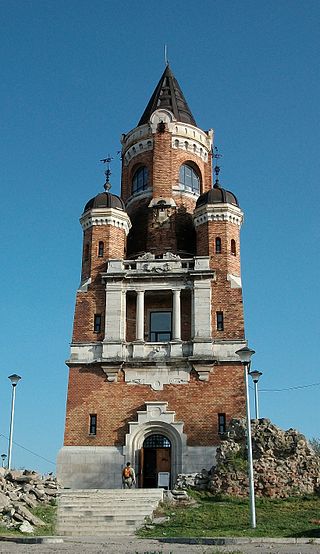
The Gardoš Tower, also known as Millennium Tower or Kula Sibinjanin Janka is a memorial tower located in Zemun, city of Belgrade, Serbia. It was built and officially opened on 20 August 1896 to celebrate a thousand years of Hungarian settlement in the Pannonian plain. The Millennium project included seven monuments in total all over the Hungarian part of Austro-Hungary, with Gardoš Tower being the southernmost; the others were at Budapest, Brassó, Dévény, Munkács, Nyitra, and Szeged. They were all different, including obelisks and columns.
51. Pavillion Veljkovic
The Veljković Family House is a historic building that hosts frequent cultural events and exhibitions in central Belgrade, Serbia, Built in 1883 in the style of 19th century academism, it was the historical seat of the elite Veljković family, and initially known for its interior architecture and 1931 art pavilion. Plundered and half-destroyed in 1944 by Soviet occupation forces and then seized by the communist Yugoslavian state, its garden became the site of the East German Embassy while the house remained neglected for four decades, until renovation work begun by the family in 1991 was completed in 2007.
52. Црква Светих Арханђела Михаила и Гаврила
The Rakovica Monastery is the monastery of the Serbian Orthodox Church, within the Archbishopric of Belgrade and Karlovci, located in the municipality of Rakovica in Belgrade, the capital of Serbia. It is dedicated to the archangels Michael and Gabriel.
53. Monument to Vojvoda Vuk
Monument to Vojvoda Vuk is a sculpture in the Park Proleće in Belgrade, Serbia. The sculpture was created by Đorđe Jovanović in 1922 and the monument was erected in 1936. It is dedicated to the most respected figure of the Chetnik movement.
54. Vracar Plateau
Vračar plateau is a plateau on top of the Vračar Hill in Belgrade, the capital of Serbia, with an absolute height of 134 metres above sea level. It is the purported location of the 1594 Burning of Saint Sava's relics by the Ottomans. The dominant position in Belgrade's cityscape made the plateau a natural location for the first meteorological observatory in Serbia, Belgrade Meteorological Station, built in 1891. The most distinctive feature of the plateau today is a massive Church of Saint Sava, visible from almost all approaches to the city, and one of the Belgrade's main landmarks. The plateau also houses Karađorđe's Park, Park Milutin Milanković, monument of Karađorđe Petrović and National Library of Serbia.
55. Church of St Basil of Ostrog
Church of Saint Basil of Ostrog is a Serbian Orthodox Church located in Bežanijska Kosa neighbourhood of New Belgrade. Its construction started in 1996 and completed in 2001, and is the first church built in New Belgrade since World War II. The architect Mihajlo Mitrović adopted an "old Christian" rotunda-plan combined with side galleries and a tall bell-tower to the west. Funding for the project was provided by civilians, whom the saint is known to as the Miracle maker.
56. Despot's Gate
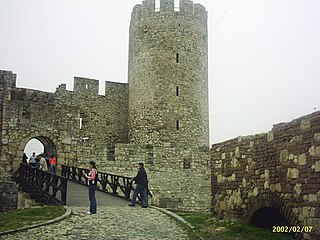
The Despot's Gate, the Eastern Upper Town Gate or the Gate of Despot Stefan Lazarević is one of the many gates at the Belgrade Fortress, built in its entirety with the neighboring fortifications, on the site where the main entrance to the Belgrade Fortress was located in the Middle Ages. Next to the gate there is a massive rectangular Dizdar Tower which now houses the Observatory of the Astronomical Society "Ruđer Bošković".
57. Касарна са североисточне стране Горњег града
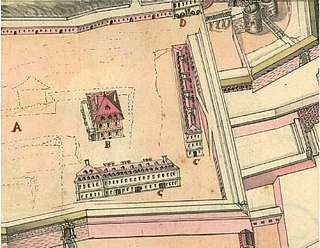
The Infantry Barracks in the Belgrade Fortress were the two oldest buildings from the Baroque period of Belgrade built in the eastern half of the Upper Town. Of these buildings to this day, only the foundations and remains of collapsed cellars remain, which have not been archaeologically explored or documented in detail.
58. Nebojsa Tower
Nebojša Tower is the only surviving mediaeval tower of the Belgrade Fortress. Built in the 15th century, it was the major defensive tower of the fortress for centuries. Later it served as a dungeon and in 2010 it was adapted into a museum. The tower is located near the confluence of the Sava into the Danube.
59. Зграда Хемпро
The Hempro building is an architectural work of arch. Aleksej Brkić, was created in the sixth decade of the 20th century, in Terazije, the central commercial, business and historical space of the city of Belgrade.3 After its construction, it found itself side by side with numerous rich historical and epochal works of Belgrade architectural activity on the Terasija plateau, e.g. Right next to the corner building of the Prague Credit Bank, from 1920, which at the time of its construction had a great influence on Belgrade architecture with its design vocabulary and luxurious façade. In the second half of the 20th century, the building became, and remains to this day, one of the most recognizable architectural motifs in Terazije.
60. Топчидерска црква Светих апостола Петра и Павла
Church of the Holy Apostles Peter and Paul, known as the Topčider Church is the Serbian Orthodox Church, located in Topčider park, in the municipality of Savski Venac in Belgrade, the capital of Serbia. Built between 1832 and 1834, it was an endowment of Prince Miloš Obrenović, who was also its founder. It is located next to the Residence of Prince Miloš. The church was declared a cultural monument and protected by the state in 1949.
Wikipedia: Church of the Holy Apostles Peter and Paul, Topčider (EN)
61. Ilija M. Kolarac Endowment
Ilija M. Kolarac Endowment, also known as the Kolarac People's University Building, is at 5 Students' Square in the heart of Belgrade. The building is a monument of a great cultural and historical importance and as such was declared as the immovable cultural property.
Wikipedia: Ilija M. Kolarac Endowment (EN), Website, Heritage Website
62. Kralj Petar I Primary School
King Petar I Elementary School is an elementary school in Belgrade, Serbia. The original school was founded in 1718 and is the oldest surviving cultural and educational institution in Serbia, predating the foundations of the Gymnasium of Karlovci (1796), Great School, Matica Srpska (1826) and Society of Serbian Scholarship. It was the first school in Serbia which introduced the teacher notebooks and gym classes and is the location of the first basketball match played in Belgrade.
Wikipedia: King Petar I Elementary School (EN), Website, Heritage Website
63. Drinking fountain of Mehmed Pasha Sokolović
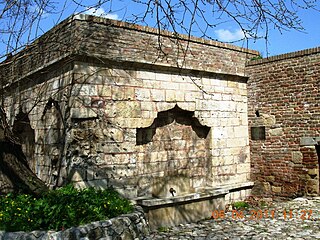
Mehmed Paša Sokolović Fountain is an Ottoman era fountain in Belgrade. It is located next to the Defterdar's Gate near the northwestern wall of the Upper Town of Belgrade Fortress. Evliya Çelebi states that the fountain was erected in 1576/77, during the lifetime of Grand Vizier Меhmed Paša Sokolović and it is his only surviving endowment in Belgrade. The precise position of the fountain does not appear in any cartographic sources until the 17th century. The earliest sketch dates back to a plan from the National Library in Paris from the early 17th century, in which the fountain was presented as a rectangular structure with three free sides.
64. Ivo Andric Museum
The Museum of Ivo Andrić is a museum located in Belgrade, the capital of Serbia. Founded on 10 October 1976, it is dedicated to the Nobel prize winning writer Ivo Andrić. It is operated by the Belgrade City Museum.
65. Земунско гробље
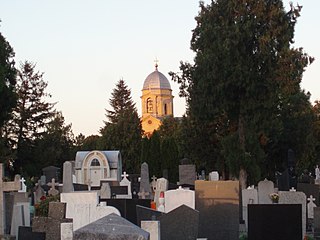
Zemun Cemetery is a public cemetery situated in Zemun on the Gardoš Hill. It is bounded by Cara Dušana Street, Nade Dimić Street, Sibinjanin Janka Street and Grobljanska Street, as well as with the staircase towards the Branka Radičevića Square, thus making the northwest boundary of the Old Core of Zemun. The cemetery is proclaimed the cultural monument.
66. Црква Криста Краља
The Co-cathedral of Christ the King is a Catholic place of worship located in Krunska 23, in the city center of Belgrade, Serbia. It is the oldest extant Catholic church in the city south of the Sava and the Danube rivers, and was built between 1924 and 1988, the cathedral of the Archdiocese of Belgrade.
67. Mihailo Petrovic Alas' House
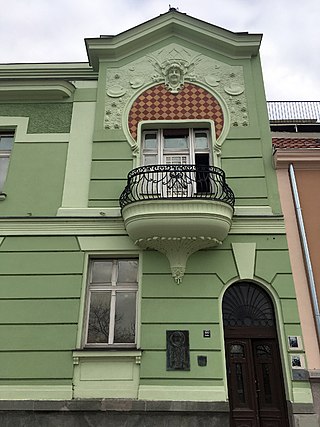
Please credit this with: "Sadko, Wikipedia" in the immediate vicinity of the image. A message or email to me would be appreciated as well. If you would like special permission to use, license, or purchase the image please contact me Sadko to negotiate terms. / CC BY-SA 4.0
The House of Mihailo Petrović, also known as Mika Alas House is a house and a designated historic site in Belgrade, the capital of Serbia. Built in 1910, it is located at 22 Kosančićev Venac Street. Mathematician and scientist Mihailo Petrović (1868–1943) lived, worked and died there. In the early 1900s there was an expression that "half of the Serbian science lives at 22 Kosančićev Venac."
68. Антички Таурунум
Taurunum is a Roman settlement in the province of Lower Pannonia, which was located on the territory of today's Zemun, more precisely on Gardoški Breg, and included a fortress, a civilian settlement and a necropolis. It developed on an older Celtic fort during the 1st century and lasted until the 4th century. It consisted of the castle of the Danube fleet, as well as a civilian settlement. From the remains of material culture, the remains of fortifications, burial architecture and epigraphic monuments, reliefs, hoards of coins, etc. were discovered.
69. Historical Museum of Serbia
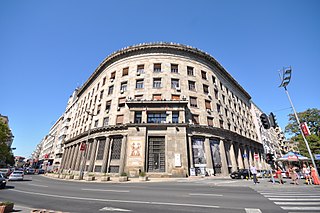
The Historical Museum of Serbia is a public institution dedicated to documentation of history of Serbia from prehistory up to the present. The museum was established in 1963 and today it preserves over 35,000 exhibits in its collection. Over the years the museum was located at different locations around the capital city of Belgrade. In 2020, as a part of the Belgrade Waterfront development project, the museum was granted the historical building of the Belgrade Main railway station as its new permanent base. The museum is one of the leading institutions of its kind in the city and the country.
70. King Gate
The King Gate is one of the many gates on the Belgrade Fortress, built in its entirety with the neighboring fortifications in the southwestern inner walls, at the opposite end of the Despot's Gate. A short staircase leads to the gate that passes by the Roman well. It is connected to the rest of the city by a bridge. It was built around 1725 Once the shortest connection between the Sava coast and fortified Belgrade, today, an indispensable part of Belgrade's tourist offer.
71. Hyde Park
Hyde Park is a park in suburban Belgrade, Serbia. It is situated in the municipality of Savski Venac, on the northern slopes of Topčider Hill. It consists of two parts: woodland with tracks for running, and another with appliances for fitness and recreation. The park is triangular in shape. Hyde Park was laid out in the 1930s.
72. City Park
City Park or Zemun Park is a park in Zemun, a neighborhood of Belgrade, the capital of Serbia. Located on the rim of the Old Core of Zemun, it is considered today as one of the symbols of Zemun and one of the most beautiful parks in Belgrade.
73. Zavičajni muzej Zemuna
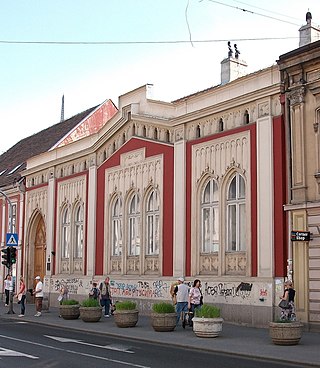
The Spirta House is a building located in Zemun, Belgrade, the capital of Serbia. Built in 1855, today is the location of the Zemun Home Museum. Since 1965 has been protected as the cultural monument. The house is the only preserved representative of the Gothic Revival architecture in the wider Belgrade area.
74. Academy Park
Academic Park is a park in Belgrade, the capital of Serbia. It is situated in the neighborhood of Studentski Trg, in the downtown. It is located in Belgrade's municipality of Stari Grad. Built from 1886 to 1889, Academic Park is one of the oldest parks in Belgrade.
75. Belgrade Planetarium
Belgrade Planetarium is one of two planetariums in Serbia. It is located in Belgrade and is operated by the Astronomical Society Ruđer Bošković. Before 1967 it was known as the "Turkish bath in Lower Town".
76. Позив на устанак
The Call for Uprising is the name given to several sculptures made by sculptor Vojin Bakić. The first was created in 1946 and was installed in Bjelovar, while two later sculptures are located in Belgrade. The sculpture depicts a man in a gap, who, with his right arm raised above his head and his left hand strongly stretched, calls for an uprising. Soon after its installation, the sculpture was recognized as one of the most recognizable anti-fascist monuments in Yugoslavia.
77. Cvijeta Zuzoric Art Pavilion
„Cvijeta Zuzorić“ Art Pavilion is an exhibition building in Belgrade, in Kalemegdan, situated in the park's section of Little Kalemegdan, next to the south-eastern front of the Belgrade fortress. It was built between 1927 and 1928 after the design of the architect Branislav Kojić, in the Art Deco architectural style. It was the first venue built specifically as an exhibition space, or an art gallery, in Serbia.
Wikipedia: Cvijeta Zuzorić Art Pavilion (EN), Heritage Website
78. Monument to Dositej Obradović
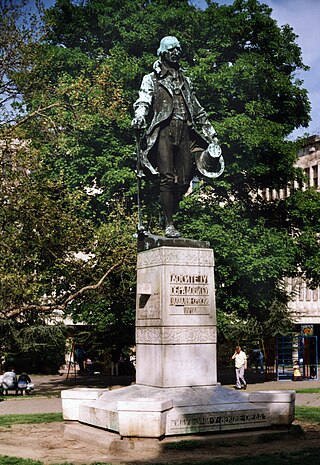
The monument to Dositej Obradović is located in the Academy Park, Belgrade, Serbia. Obradović was Serbian writer, educator and the reformer from the revolutionary period of the national awakening and rebirth. Also in the park are monuments of the prominent Serbian scientists Josif Pančić and Jovan Cvijić, near Belgrade University.
79. Фондација Саша Марчета
Cinema "Balkan" is located in Belgrade at 16 Braće Jugovića Street. As the location of significant events in the history of Belgrade and Serbia, the "Balkan" Cinema represents a testimony to the cultural, urban and architectural development of Belgrade since the second half of the 19th century. It has had the status of a cultural monument since 1984.
Wikipedia: Balkan Cinema building, Belgrade (EN), Heritage Website
80. Евангеличка црква
The Evangelical church in Zemun /'Serbia'/ was built in 1926–30 at the corner of Prilaz and Tošin Bunar streets. It was designed by Jewish-Croatian architect Hugo Ehrlich to serve needs of Zemun's Evangelical community at the time mostly consisted of Germans.
81. Црква Светог Архангела Гаврила
The Church of Saint Archangel Gabriel is a temple of the Serbian Orthodox Church located in the municipality of Savski Venac in Belgrade. It was built between 1937 and 1939 in honor of the Serbian soldiers who died during the First World War.
Wikipedia: Црква Светог архангела Гаврила у Београду (SR), Heritage Website
82. Крсмановићева кућа
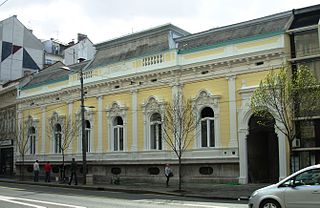
Krsmanović's House, situated at 34 Terazije Street in Belgrade, was built in 1885 for a merchant. In 1918, it became the house of Alexander Karađorđević, Prince Regent of Yugoslavia and was used as a theatre before it became public property after World War II. It has served as the Protocol building of the Ministry of Foreign Affairs. The Academic art house is considered among the best designs of the architect Jovan Ilkić.
83. Завичајни музеј Жарково
The old school in Žarkovo, on the territory of the municipality of Čukarica, was built in the middle of the 19th century. The building was erected as an administrative building of the municipality of Žarkovac, and in 1880 an elementary school moved into it. It represents an immovable cultural property as a cultural monument.
84. Осматрачница српске врховне команде на Кајмакчалану
In World War I, after crossing over Albania, where it was annihilated, the Serbian Army recovered after a while and occupied its position at the Macedonian front, which spread across the mountain Kajmakčalan in Маcedonia. On the top of this mountain there was the observation post of the Serbian Army High Command. It is located in the Pioneers Park.
Wikipedia: Observation Post of the Serbian Army High Command on Kajmakčalan (EN)
85. Žetelica
The sculpture "Reaper" is located in Belgrade, it was cast in 1852 and is located in Topcider Park as the only preserved and oldest example of decorative park sculpture of Belgrade from the 19th century.
Wikipedia: Скулптура „Жетелица“ у Београду (SR), Heritage Website
86. Катедрала Узнесења Маријина
The Cathedral of the Blessed Virgin Mary also called the Catholic Cathedral of Belgrade is since 1988 the cathedral church of the Roman Catholic Archdiocese of Belgrade. It is located at 75 Hadži Milentijeva Street in the Belgrade's neighborhood of Neimar, in the municipality of Vračar.
Wikipedia: Cathedral of the Blessed Virgin Mary, Belgrade (EN)
87. Обелиск подигнут у спомен прве конференције Покрета несврстаних земаља 1961. у Београду
The Obelisk of the Non-Aligned Countries is a monument in Belgrade. It is located in the immediate vicinity of Branko's Bridge in the Park of the Non-Aligned Countries, the municipality of Stari Grad.
Wikipedia: Обелиск несврстаних земаља код Бранковог моста (SR)
88. Возарев крст
Vozarev Cross is located in Belgrade, in the park between Vojvode Šupljikca Street and Mileševska Street, and it was erected in 1847. It represents the immovable cultural property as the cultural monument. The famous Belgrade bookseller and a printer, Gligorije Vozarević, erected a wooden cross decorated with icons in his own field at Vračar. The contemporaries interpreted the erection of the cross not only as the symbol of the faith and religion, but also as the symbol of the liberation – the symbol of the victory. For that reason, this cross is considered as the first public monument in Belgrade. The ruined wooden cross was replaced by the Belgrade Municipality in 1933 with one in red artificial stone. The part of Belgrade was named after it Crveni Krst.
89. Monument to Archibald Reiss
The monument to Archibald Reiss was erected in Belgrade in memory of Dr. Archibald Reiss, a friend of Serbia, a well-known expert in criminology and a professor at the University of Lausanne. The monument is located in Topčider Park and represents an immovable cultural property as a cultural monument.
90. First Town Hospital
The First Town Hospital was built in Belgrade, the capital of Serbia in 1868. The construction was initiated by the ruling prince Mihailo Obrenović as the first building in Belgrade built purposely to serve as a hospital.
91. Nikola Pasic's House
Nikola Pašić House is located at 21 Francuska Street, in Belgrade, the capital of Serbia. Originally built in 1872 and thoroughly expanded in 1921, it was purchased by the longtime prime minister Nikola Pašić in 1893. It was declared a cultural monument in 1984.
92. Vidin Gate
The Vidin Gate is the Lower Town Vidin Gate, part of the Northeastern Front of the Belgrade Fortress. It was built in the period from 1740 to 1750, as part of Turkish works on the rebuilding of previously destroyed Austrian fortifications.
93. Monument to Josif Pančić
Monument to Josif Pančić was erected in Belgrade in the memory of Јоsif Pančić (1814–1888), a Serbian doctor, scientist, botanist and the first president of Serbian Royal Academy. The monument is located in the Academy Park and has the status of the cultural monument. The monument was erected in 1897, as the work of the sculptor Đorđe Jovanović, one of the first local educated sculptors.
94. Музичка школа Станковић
"Stanković" Music School in Belgrade, founded in 1911, under the auspices of King Peter I, as a musical and teaching institution. It is one of the oldest educational institutions in Belgrade. When it was established, it operated within the Choral Society "Stanković". It was named after the Serbian composer, and pianist Kornelije Stanković who was the first to introduce harmonics of the Serbian root and spiritual compositions.
95. Natural monument Old platanus
The plane tree at Milošev konak is a natural monument of botanical character located in Topčider in front of Milošev konak. It is located in the municipality of Savski Venac in Belgrade. The plane tree is distinguished by a large tree circumference and a branched crown. It is about 200 years old, and it is believed that it was planted during the construction of Miloš konak in the 19th century, more precisely around 1830.
Wikipedia: Споменик природе Платан код Милошевог конака (SR)
96. Remains of the Metropolitan's Court
The remains of the Metropolitanate building in Belgrade are located within the Belgrade Fortress in the rock below the Lower Town. The Metropolitan Palace was built on the foundations of an earlier building, on the site of an 11th-century church dedicated to the Assumption of the Most Holy Theotokos, the patron saint of the city of Belgrade.
97. Krsmanovic Brothers' Steam Bath
The Steam Bath of Brothers Krsmanović is the former public bath in Belgrade, the capital of Serbia. Built from 1901 to the 1920s around the former Turkish bath from the 18th century, it was the last operational public bath in Belgrade, until it was closed in 2004. In 2001 the edifice was declared a cultural monument. The first public swimming pool in Belgrade was opened in the venue in 1904.
Wikipedia: Steam Bath of the Brothers Krsmanović (EN), Heritage Website
98. Црква Светог Трифуна
The Church of St. Tryphon at the Topcider Cemetery in Belgrade is one of the churches of the Archdiocese of Belgrade-Karlovac of the Serbian Orthodox Church. The dean of the church from 1988 to 2016 was V. Rev. Stavrophor Dejan Dejanovic.
99. Old Port Master's Office
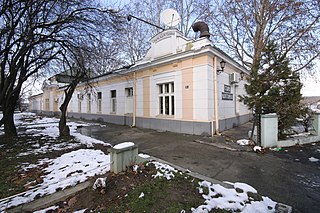
The Old Captain's Office in Zemun is an immovable cultural property located in Zemun, at the address Kej oslobođenja 8. It was built in 1908 as a steamship passenger station. The Government of Serbia placed the building under state protection by publishing in the Official Gazette, No. 35 of April 17, 2013.
100. The place of The 1867 handover of the keys of Belgrade
The Keys Handover Memorial in Belgrade, Serbia, marks the spot where on 6 April 1867, the town keys of the several Serbian fortresses were given to Prince Mihailo Obrenović by the Ottoman Turks. That moment was an important step towards Serbian international recognition at the Treaty of Berlin in 1878.
Share
How likely are you to recommend us?
Disclaimer Please be aware of your surroundings and do not enter private property. We are not liable for any damages that occur during the tours.
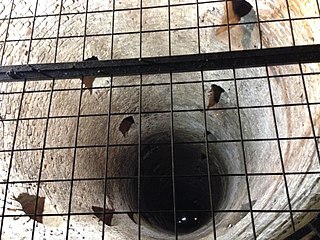
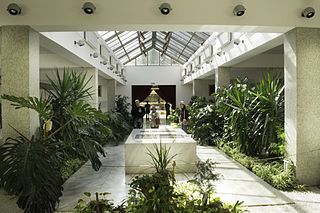
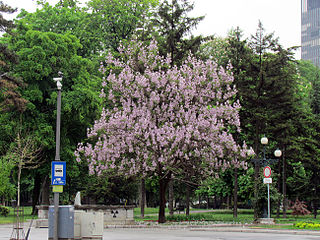
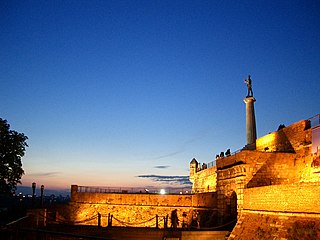
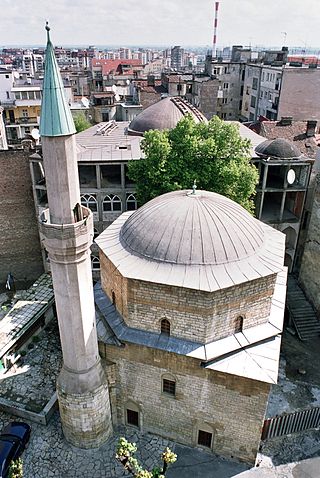
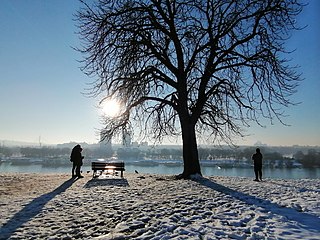
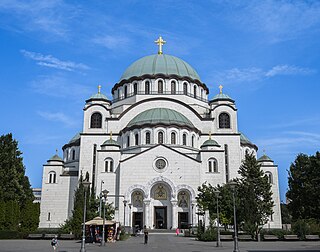
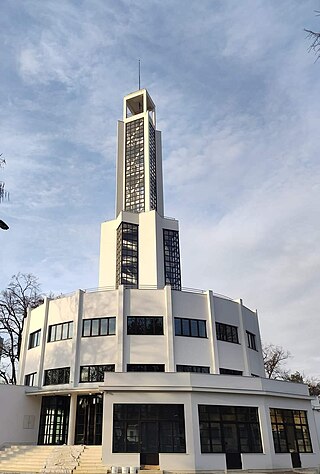

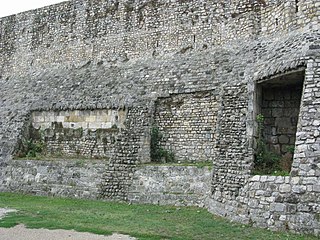
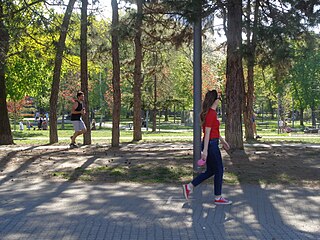
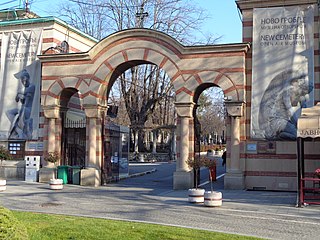
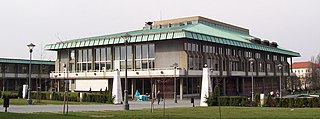
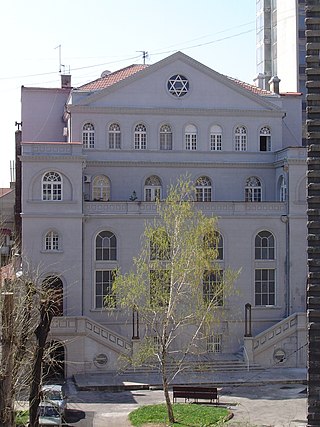
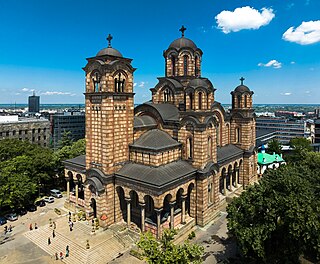
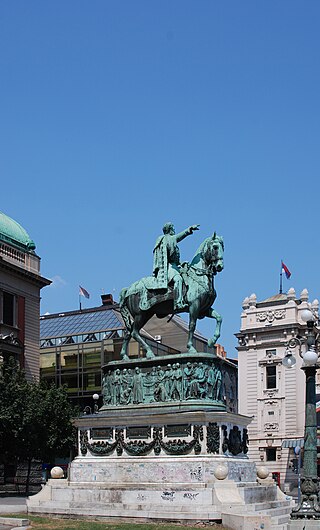
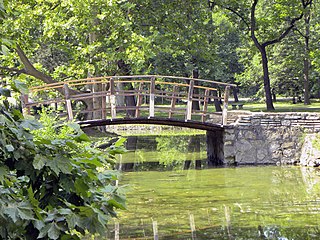

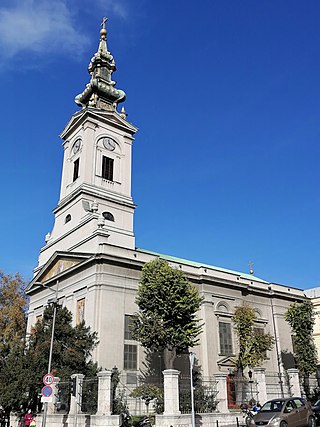
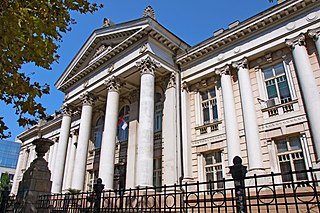
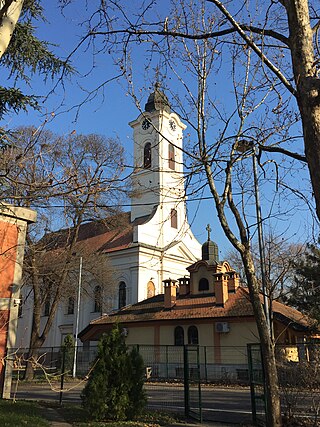
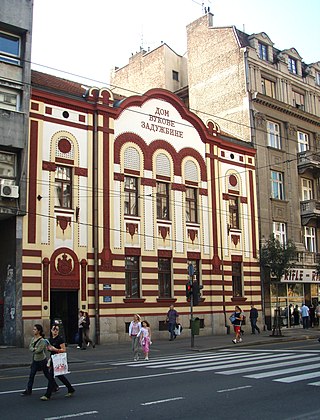
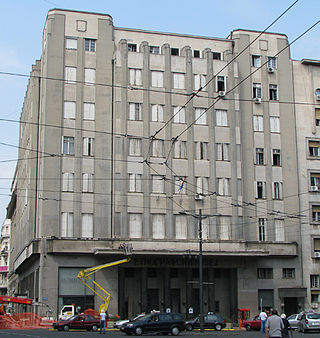
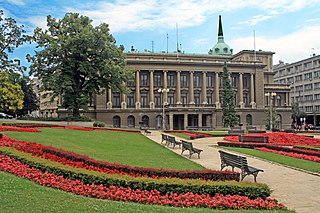
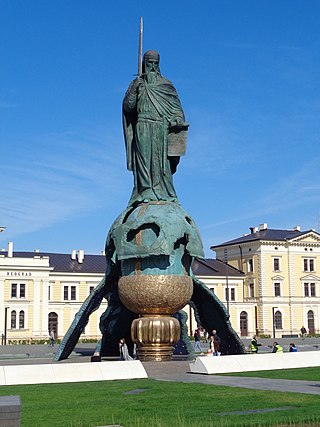
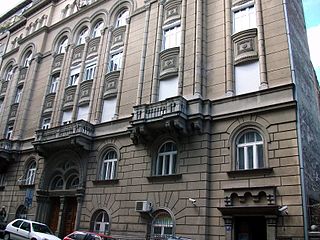
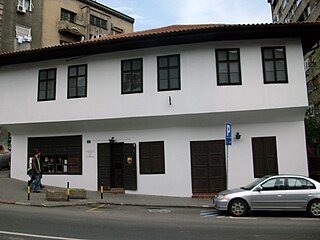
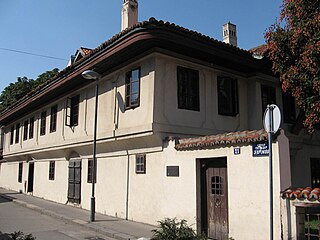
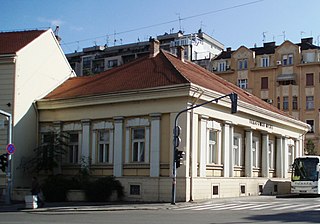
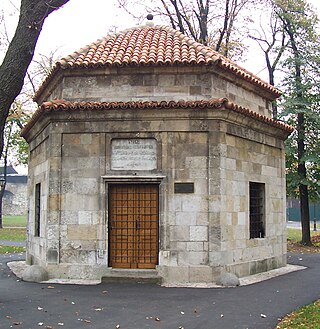
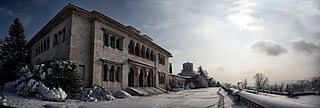
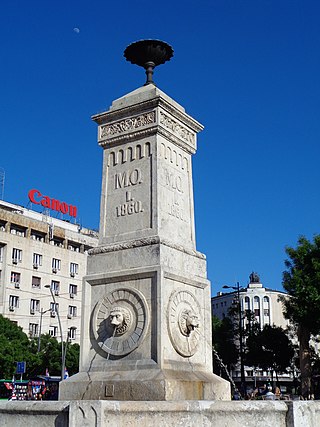
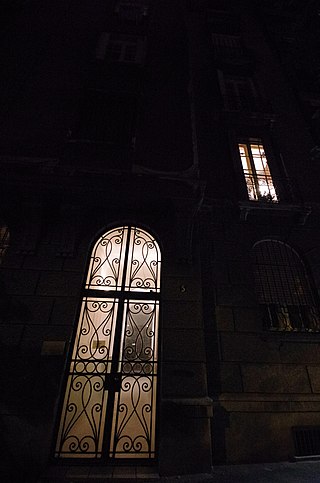
.jpg)
